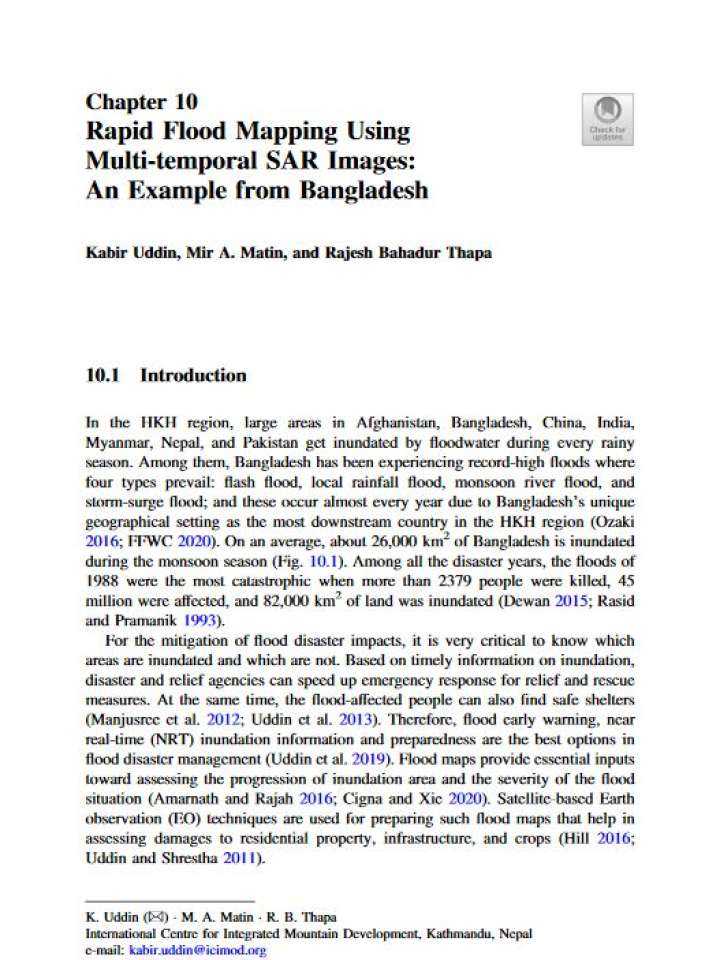Rapid flood mapping using multi-temporal SAR images: an example from Bangladesh
In the Hindu Kush Himalayas (HKH) region, large areas in Afghanistan, Bangladesh, China, India, Myanmar, Nepal, and Pakistan get inundated by floodwater during every rainy season. Among them, Bangladesh has been experiencing record-high floods where four types prevail: flash flood, local rainfall flood, monsoon river flood, and storm-surge flood; and these occur almost every year due to Bangladesh’s unique geographical setting as the most downstream country in the HKH region. The International Centre for Integrated Mountain Development (ICIMOD) developed a rapid flood mapping method when Bangladesh was hit by floods in 2017.
The flood maps were prepared for the months of March, April, June, and August and were provided to the disaster management agencies in order to prioritize relief and rescue operations. With some refinements, the same method was used for mapping the floods of 2018 and 2019 in Bangladesh, Nepal’s Terai, and the Koshi River Basin in order to support flood management and relief measures. This chapter explains the rapid flood mapping methodology developed for the 2019 floods in Bangladesh and its application.
The flood maps show the high potential of Earth Observation (EO) and geospatial technology to analyze and provide the necessary support for prompt and effective decisions on flood disaster management to the authorities. In the wake of constant weather constraints during the flooding time, the example shows the rich potential of freely available Sentinel-1 SAR-based solutions to produce detailed mapping with high accuracy. The frequent occurrence of natural flood disasters is common in the HKH region, and it needs efficient tools for flood mapping in order to support damage assessment, emergency response, and disaster management.
Explore further
